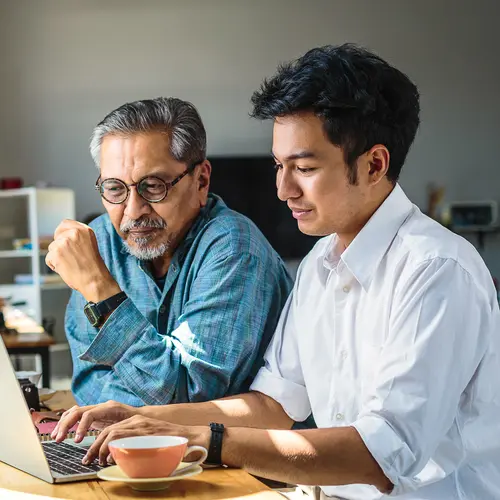You crawl out of bed in the morning, and there it is: pain. For some of us, it's a hot needling in the knee. For others, it's a creaky, aching back, complete with knotted neck muscles; or it's the tender hip joint that feels like you somehow got sand in it overnight.
Do some of these need medical attention? Maybe, but some of them are everyday, run-of-the-mill aches and pains that we can treat at home. But how do you tell the difference?
It may offer some relief to know that even for medical professionals it's not always immediately apparent which injury needs treatment and which needs a couple of ibuprofen, some light compression, and an ice pack.
Serious or Minor Injury?
"Pain itself is a good indication of the difference between injury that needs attention and injury that will resolve itself with some self-care," says Andrew Cannon, a sports trainer and physical therapist at Andover College in
Andover, Mass. "Injury that significantly impairs your mobility or that doesn't go away after 48 hours needs medical attention."
Most simple aches and pains are the result of overexertion, says Randy Braith, PhD, associate professor of exercise physiology at the University of Florida in Gainesville. "Achiness in medical terms is known as 'delayed onset of muscle soreness,' and that passes quickly," he says. "Overuse injuries and repetitive motion injuries, such as carpal tunnel syndrome, are more serious and will need to be seen by a doctor."
Here are some simple remedies for treating those pains that don't need a doctor.
For a twisting injury to knee, hip, or other major joint, think RICE.
"That's short for rest, ice, compress, and elevate," says Cannon. "Right away after an injury, this is the first step to take." Rest and ice are easy enough, and so is elevation, but what about compression? Cannon says that it's important to apply light compression.
"You want to have no more compression than that which you would get by simply resting your hand on the ice pack," he says. "The pressure of an Ace-type bandage is too much and can cause significant extra injury by affecting the superficial nerves in the area of injury."
Get Some Pain Relief
Ask three experts which pain reliever to use on muscle aches and minor strain injury and you'll get three different answers. One train of thought says you shouldn't take ibuprofen or aspirin after an injury. Both are blood thinners, which, in theory, may worsen bruising.
"But when you talk to orthopaedic specialists, they often say the extra bruising risk is minimal and is offset by the anti-inflammatory effects of ibuprofen," says Mike Powers, PhD, assistant professor and injury prevention specialist in the exercise and sports sciences department at the University of Florida. "There's no one answer here."
The safe bet, everyone agrees, is acetaminophen for pain, though it won't do much for swelling.
"Ice does the majority of the anti-inflammatory work, anyway," says Braith.
Stretch and Flex Pain Away
Maybe yoga and Pilates -- both strength and flexibility exercise regimens -- seem too "out there" to be of any use in dealing with aches and pains, but increasingly exercise physiologists are recommending them.
"Yoga and Pilates add tone and strength to muscles in a way that is totally nonimpact, and its use as part of an injury-prevention plan is nearly commonplace now," says Powers. "These stretching exercises increase your flexibility and help you work muscles that other strength-building programs like weight training won't affect. The more you work at increasing flexibility, the less likely you are to have injury.
Try Massage
That massage therapy can be a very effective muscle relaxer and stress reducer is certainly a bit of good news. A growing body of evidence suggests that massage therapy can reduce stress and reduce the severity of minor chronic pain.
Â
Don't Ignore It
It's easy to dismiss aches and pains as a part of the aging process. But research shows that though the frequency of chronic pain goes up with age -- especially pain from osteoarthritis -- that doesn't mean that getting older means you need to live with everyday pain.
A study of pain in a scientifically sampled group of older people in Melbourne, Australia, showed that reports of acute and chronic pain do not increase with age over the age of 60, according to a study published in the Journal of the National Aging Research Institute in March 1999.
Researchers found that widely experienced "aches and pains" reported by people as they age may be in part due to what they describe as a difference in pain threshold and tolerance between old and young people. They found that older people appeared to have a higher pain threshold than younger people, but also a diminished ability to dampen pain once it started.
So it may not be wise to take what seems like age-related pain in stride. It may be a sign not of age, but of an underlying condition that may be treatable by a doctor.
Â
Â


